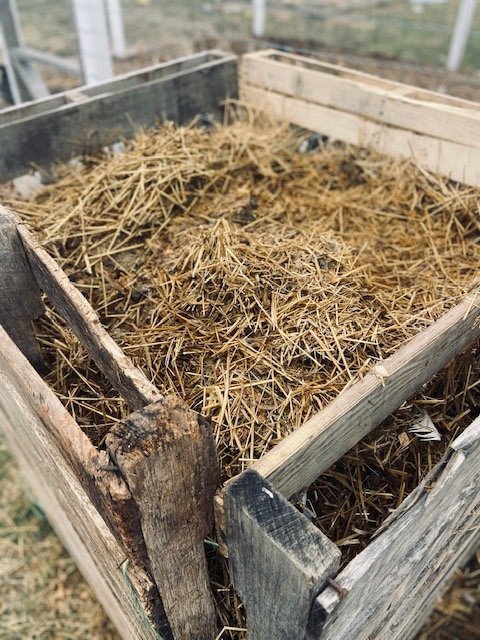Saying goodbye to our beloved milk cow…
We’re sending our girl, Casey, away for a bit.
One of the potential challenges of having a family milk cow is breeding them back each year for a new calf.
You can keep your own bull to do the job (which is hard to justify the space & cost of for a once-a-year-need). Or you can have them AI-ed (artificial inseminated). AI can be hard to time correctly and notoriously take 2-3 attempts. Our first year breeding her back, we had a bit of beginner’s luck. She was successfully bred via AI our first try! However our second go-around has been more challenging…
Ideally, you breed back 2-3 months post calving so they are giving birth each year around the same time (gestation is roughly 9 months - just like for humans).
She calved last May and we tried to AI in August but were unsuccessful.
By the time we confirmed it was mid-September. I then had to decide - do we try breeding again in October and potentially be looking at a July calf?
July may seem like a fine time for a calf to be born. But my hesitation was due to the fact that our summer grazing pastures are heavily alfalfa based. Which is great for a cow in milk to eat. But not great for a cow that is dried off and preparing to have a calf. So being due in July would mean we’d potentially have to feed her purchased hay in June and July (after already being on hay all winter) instead of letter her graze free grass.
I made the decision to hold her off a few months in hopes of breeding for a fall calf. If you remember from previous emails, the AI tech came the day after our seventh baby was born in early February.
Though I could have had her milk or blood sample tested for pregnancy - it was pretty clear to me 3 weeks later that she was back in heat. And then again, right on time, 3 weeks after that.
So, I’m assuming she’s not pregnant. Ugh.
And again, having multiple attempts isn’t unheard of for AI-ing. A cow’s window of breed-ability is very small (less than 24 hours). But now we’re at the point of trying to decide if we pay for a THIRD attempt or go to plan B.
We decided to give plan B a try.
No, we’re not getting a bull. I really don’t have any interest in one and honestly - I’m not comfortable with the idea of having one on our property. But after talking to some friends nearby who do keep a bull, they graciously agreed to let Casey come “hang out” with him for a few days.
Of course the biggest annoyance of this option is that she is a milk cow and still requires being milked… DAILY. So instead of running out to the barn quick in the afternoon, I’ll be loading kids up and hauling all my equipment 10 minutes away.
But ultimately I know it’s our best shot at success and I’m hopeful I can report back in a month that we finally have her next calf on the way!
Let’s talk about compost!
For many of my early years of gardening, I spent hundreds of dollars each spring on bagged and even bulk deliveries of compost to amend my soil.
Even though we’ve always made our own on some level - it was never near enough for what we needed - especially as our growing spaces expanded more and more.
Finally - two years ago, we found the secret to having more than enough compost made on farm so that we never have to outsource it again.
The secret, you ask?
It was having a cow.. haha!
Our girl can produce 100# of manure every.single.day!
It’s literally insane. But it’s also arguably just as valuable as the milk she produces. All her winter bedding and manure is piled high in the spring, turned occasionally throughout the summer, and then ready to use to my hearts content the next year.
(In the summer time — all her manure goes directly onto our pastures (which desperately need it) and fertilize the sandy soil.)
Sure, dealing with all that manure this time of year is backbreaking. But when I’m ready to top off and amend my garden beds in the spring, I am singing her praises (most of the time).
This Week’s Homestead Handout
Though my preferred way to make compost is the “pile it and forget it” method. I’m going to add a few more hands-on piles this spring.
If you’ve never made your own compost before, this weeks free handout is a beginners guide to building your pile (whether you want it finished in 2 weeks or 2 years). Download it here!
As a bonus for our member’s - I wrote up some plans for making your own Compost Sifter - which is just a simple tool for making your final product that much better and easier to use.
You can see more details about our members area here.
That’s all for this week!
Blessings from our little homestead,
Beth



